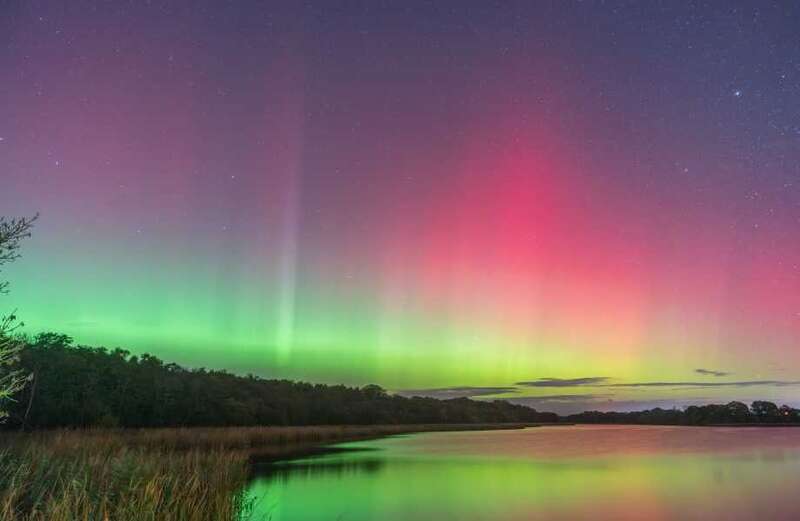THE Northern Lights dazzled the UK on Sunday night and even graced the skies above Kent, Dorset and Wiltshire in an unexpected display.
If you missed the bucket-list sighting, then you might have another chance at seeing them tonight, Monday, November 6.

But don't get your hopes too high.
The Met Office has warned that the most vibrant display may have already passed.
According to the weather forecaster, there is now only a chance of Aurora sightings across northern Scotland for November 6 and "perhaps" November 7.
 Spectacular New Year fireworks light up London sky as huge crowds celebrate across UK for first time in three years
Spectacular New Year fireworks light up London sky as huge crowds celebrate across UK for first time in three years
"Thereafter aurora sightings are expected to become unlikely," the Met Office said.
What time can I see the Northern Lights?
Although quite rare, the Northern Lights can appear in the UK from time to time.
The polar lights could appear anytime between 7pm and 4am.
Although, the the optimum time seems to be around 9.30pm to 1am.
What are the best locations in the UK to see the Northern Lights?
The Northern Lights are most visible above parts of England's north, Scotland and Northern Ireland during this geomagnetic storm.
But they can also be spotted further south, such as in Wiltshire and Cornwall.
You might not be able to see the lights on this opportunity but here are the best locations across the UK to prepare yourself for next time:
- Scottish Highlands
- Scottish Isles
- North of Northern Ireland, towards The Malin Sea
- Giant's Causeway in Northern Ireland
- Cumbria in North West England
- Lake District
- The Cornish Coast
- Exmouth National Park in Devon
- Anglesey in Wales
- Pembrokshire in Wales
- The mountains of Carneddau in Snowdonia, Wales
- Brecon Beacons Mountains in Wales
How do I see the Northern Lights?
With the nights growing longer, there is more opportunity to see the Northern Lights than in the warmer months.
But to give yourself the best chance to see them, it helps to be in an area with little light pollution.
Rural areas are best for sky gazing - but make sure your view isn't obstructed by tress, or clouds (which may be inevitable).
 Robbie Williams poised to launch his own brand of energy drinks to rival Prime
Robbie Williams poised to launch his own brand of energy drinks to rival Prime
Sometimes, Aurora displays can appear white to the human eye, so it can help to take a quick photo on your phone to help reveal the colours.
If you're planning on photographing the aurora properly, you'll need a DSLR or bridge camera and ideally a tripod.
Experts have also advised that hopeful watchers not be too disheartened if the aurora look dim at first - this is because they usually brighten over the course of a few hours.
What is a solar flare?
It is a flash of increased brightness from the sun which is often joined by a coronal mass ejection - which is a huge expulsion of plasma from the sun's outer layer, called the corona.
It happens when a massive burst of material from the sun prompts a geomagnetic storm, which interferes with the Earth's magnetic field.
A solar flare has the ability to disturb the Earth's atmosphere, disrupting radio signals, power grids and causing a shift in auroras.
As it heads towards Earth, bringing the aurora to lower latitudes, it allows the northern lights to become visible from the UK.
This is when they can also be seen further south.



































